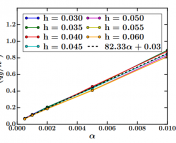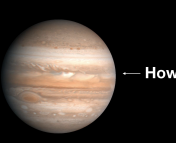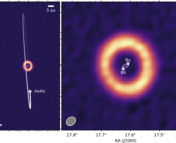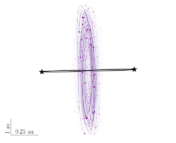Title: Images of Embedded Jovian Planet Formation At A Wide Separation Around AB Aurigae
Authors: T. Currie, K. Lawson, G. Schneider, W. Lyra, J. Wisniewski, C. Grady, O. Guyon, M. Tamura, T. Kotani, H. Kawahara, T. Brandt, T. Uyama, T. Muto, R. Dong, T. Kudo, J. Hashimoto, M. Fukagawa, K. Wagner, J. Lozi, J. Chilcote, T. Tobin, T. Groff, K. Ward-Duong, W. Januszewski, B. Norris, P. Tuthill, N. van der Marel, M. Sitko, V. Deo, S. Vievard, N. Jovanovic, F. Martinache, N. Skaf
First Author’s Institutions:
Subaru Telescope, National Astronomical Observatory of Japan, Hilo, Hawaii
NASA-Ames Research Center, Moffett Field, California
Eureka Scientific, Oakland, California
Status: Published in Nature (closed access)
Today’s authors have witnessed the tumultuous birth of a massive planet on the outskirts of its star system.
Planets Unlike Our Own
Astronomers have detected more than 5000 planets thus far. The main technique they have used to accomplish this feat is the transit method, where a planet crossing in front of its star induces a “dip” in the star’s brightness, revealing the planet’s presence. However, this technique is indirect, since one must use the light from a host star to infer the presence of a planet, rather than light from the planet itself. The other most commonly used technique for detecting exoplanets, the radial velocity method, is also indirect. Planets detected via this technique are revealed by a spectrum of their host star, rather than a spectrum of the planet itself.
These methods allow us to detect Earth-sized planets, and planets on orbits like those in our own Solar System — but what about planets unlike our own? What about planets more massive than Jupiter, or planets that are up to ten times farther away than Neptune is from the Sun?
Stellar Sunglasses
To find planets that are tens or hundreds of times farther from their host stars than the Earth is from the Sun, astronomers must use a technique called direct imaging. Stars are a thousand to a billion times brighter than the planets that they host, making it nearly impossible to see a planet in the glare of its parent star. However, in the 1930s, a man named Bernard Lyot invented the coronagraph to block the harsh light from a host star, revealing the planets that lie in its wake. This technique works best on more massive planets that are farther from their host stars, where they are not caught in the stellar glare.
Birthing Baby Planets
Today’s authors used direct imaging to investigate a star called AB Aurigae, or AB Aur, that is 531 light years from Earth in a stellar nursery called the Taurus Molecular Cloud. AB Aur is a young star; astronomers estimate that it is only a few million years old. In contrast, the Sun is estimated to be four billion years old. Since the system is still in its infancy, AB Aur has become a key laboratory for investigating how planets are formed in their earliest stages of assembly.
Previous studies of AB Aur revealed a dusty disk encircling the star, and a gap in this disk that indicated the presence of ongoing planet formation. However, a protoplanet itself had never been directly detected in the AB Aur system, or any other protoplanet-bearing system — until now!
Today’s authors used the Subaru Coronagraphic Extreme Adaptive Optics (SCExAO) project, the Coronagraphic High-Resolution Imager and Spectrograph (CHARIS), and the Hubble Space Telescope to obtain nine different data sets on AB Aur spanning four years. These data revealed something never before seen: a Jupiter-mass planet in the midst of formation, 93 au from AB Aur (Figure 1).
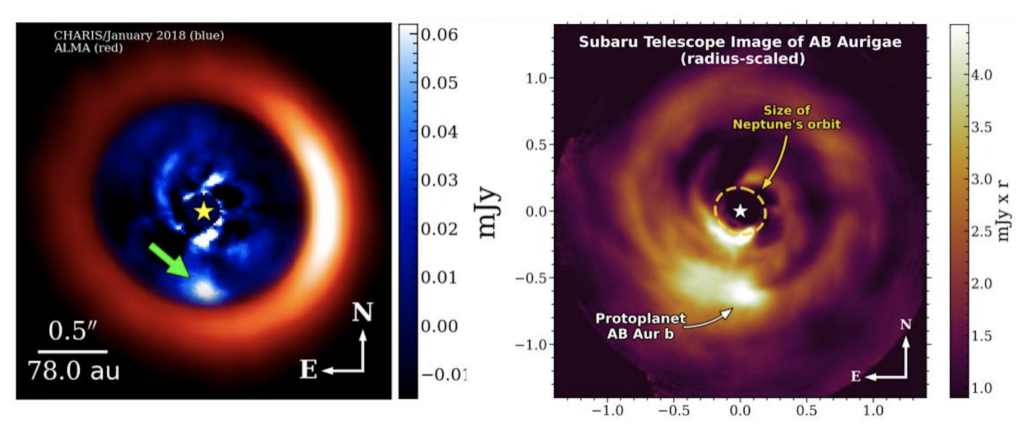
The authors also find two additional, but far fainter, clump-like signals that could be additional sites of planet formation (Figure 2). These sites are 429 and 580 au from AB Aur — almost 20 times farther from their host star than Neptune is to the Sun.
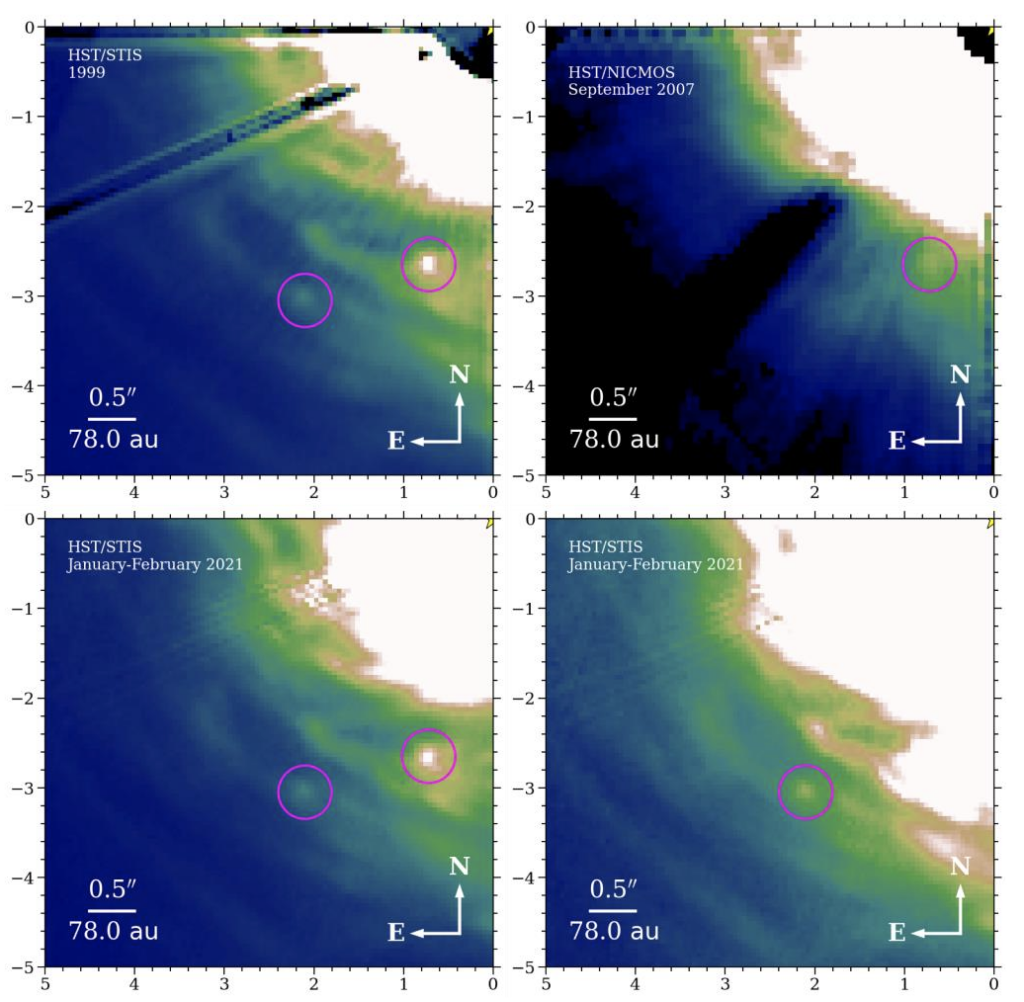
Figuring out Formation
The discovery of AB Aur b is particularly compelling to astronomers because of its impact on planet formation theories. In the core accretion model, a young gas giant forms by slowly building up a core of material that is a few times the mass of the Earth. This core then rapidly accretes gas from the protoplanetary disk, creating gas giant planets like Jupiter and Saturn. In contrast, in the disk instability model, supermassive gas giant planets form rapidly and violently through gravitational collapse at separations around 100 au (check out this astrobite for more information on planet formation theories).
AB Aur’s protoplanetary disk shows multiple spiral arms, and AB Aur b appears as a clump near these arms; these features bear a striking resemblance to simulations of Jupiter-like planet formation by disk instability. AB Aur b may therefore provide the first direct evidence that Jupiter-sized planets can form by disk instability, and that planets more massive than Jupiter can form at separations approaching 100 au. Furthermore, AB Aur b supplies a direct look at a protoplanet while it is still embedded in its protoplanetary disk, allowing astronomers to probe planet formation in its earliest stages. This is crucial, considering that the current location of an exoplanet may differ from where it formed. The AB Aur system therefore brings us one step closer to understanding the diverse types of planetary systems that populate the Milky Way.
Astrobite edited by Jessie Thwaites
Featured image credit: Currie et al.

